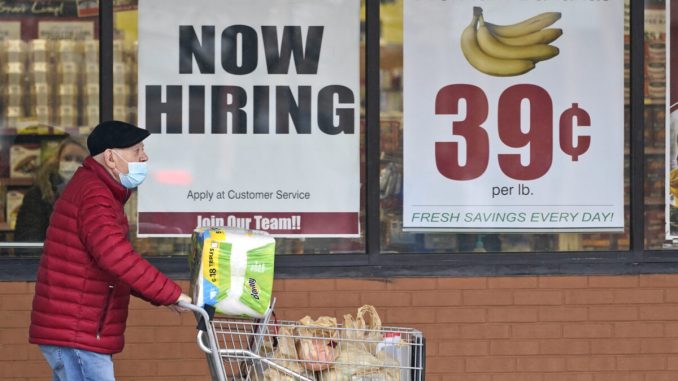
Red states, along with lone Democrat-controlled Vermont, topped the charts in lowest unemployment rates in April, while blue states recorded the highest jobless rates, according to the Commerce Department.
In a Friday release, the Commerce Department announced that the top five states with the highest unemployment rates in April were Hawaii (8.5 percent), followed by California (8.3 percent), New Mexico and New York (8.2 percent each), and Connecticut (8.1 percent). All five states have Democrat trifectas, meaning that the state houses and senates, as well as the governorships, are Democrat-controlled.
At the same time, the top four states with the lowest jobless rates in April all have Republican trifectas: Nebraska, New Hampshire, South Dakota, and Utah, with 2.8 percent each. Vermont, whose state house and senate are Democrat-controlled while the governorship is Republican, came in fifth, with an unemployment rate of 2.9 percent.
Overall, 31 states had unemployment rates lower than the U.S. national average of 6.1 percent, with 26 of them red. Of the 19 states and the District of Columbia that had jobless rates higher than the national average, 14 are blue.

Meanwhile, the three the largest year-over-year unemployment rate decreases from April 2020 to April 2021 occurred in blue states: Nevada (-21.5 percentage
points), Michigan (-18.7 percentage points), and Hawaii (-13.4 percentage points), with another 10 states experiencing declines of 10 percentage points or more.
The Commerce Department’s state unemployment report came as Federal Reserve officials and new Dallas Fed data have begun lowering expectations for May jobs growth in the United States as business hiring plans continue to outrun the supply of people able or willing to work.
Dallas Federal Reserve President Robert Kaplan said Friday that hiring difficulties have continued through May, and will likely lead to another weak jobs report following the lower-than-expected 266,000 positions added in April. The next jobs report is due for release on June 4 by the Labor Department.
A survey published by the Dallas Fed on Friday also pointed to weakening job growth.
That has been attributed to a number of factors including ongoing unemployment benefit payments and a lack of child care, and “these structural issues, which we saw in the report for April … all those tensions are not going to go away” immediately, Kaplan said at a Dallas Fed conference on technology. “We think you are going to see another odd or unusual report. … Businesses are telling us they got plenty of demand but they cannot find workers either skilled or unskilled.”
Fed officials had hoped to see a “string” of months in which a million or more new jobs were added to U.S. payrolls, helping the country quickly claw back the 8.2 million positions still missing from before the pandemic.
Business groups and Republican leaders have blamed generous unemployment benefits, expanded under President Joe Biden’s $1.9 trillion American Rescue Plan, for discouraging people from taking jobs.
In response to business hiring woes, Republican governors in at least 22 states have moved to drop the federal unemployment benefit boost.
Reuters contributed to this report.





Be the first to comment